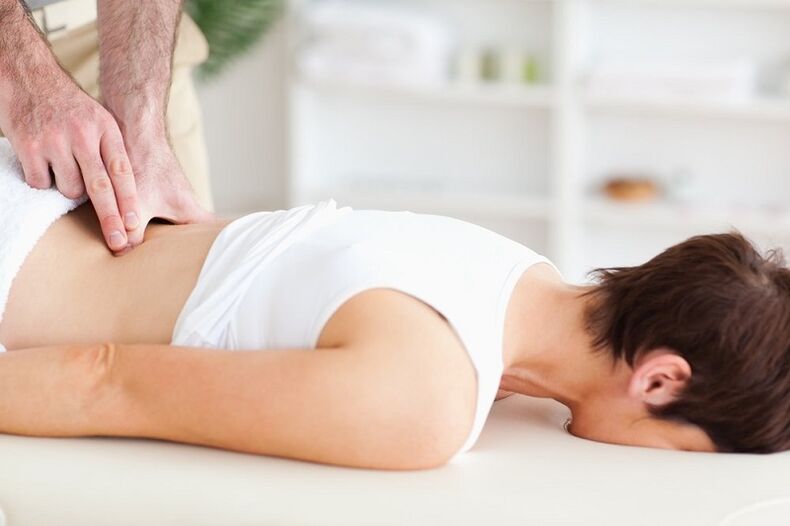Many of us are familiar with low back pain, which disrupts normal life for a long time. Although the cause may be trauma, neurological disease, or spinal defects, osteochondrosis of the lumbar spine often becomes a provocateur of unpleasant feelings. This degenerative disease can occur at a young age, the initial manifestations of which can be found even in adolescents and schoolchildren, but the majority of patients are people over 40 years. Changes in the spine associated with osteochondrosis can occur in any area from the cervix to the spine and sacrococcyx. However, the most common form of lumbar osteochondrosis is very unpleasant and painful for patients. What is this pathology, what is typical for it, and back pain always speaks of this disease.
Lumbar osteochondrosis: what is the essence of the pathology?
Osteochondrosis is a term derived from two words: Greek osteon, which means bone, and chondron, which means cartilage. Thus, osteochondrosis of the lumbar spine (and others) begins as a result of changes in the cartilage of the discs, which are the natural "lining" between the vertebrae and the shock absorber during movement. Changes in the structure and functionality of the disc are accompanied by a natural reaction in the vertebral body. With this disease, gradual degenerative changes occur in the body of the discs. The height of the disc decreases, so it loses its physiological function, causing instability and changes in the vertebral joints. As the disease progresses, a reaction occurs in the last plate of the vertebral body. This reaction can be divided into three stages: edema due to nutritional and dystrophic changes, fat degeneration, and end-stage sclerosis.
Causes of osteochondrosis of the spine
Our vertebral discs gradually begin to deform and change at about the age of 20. A gradual decrease in fluid inside the disc body causes a reduction in the space between the vertebrae (chondrosis). This means that the disc can no longer function as a shock absorber and the tension in the anterior and posterior longitudinal ligaments of the spine changes. As a result, the vertebral joints are increasingly loaded. The spinal ligaments are not positioned properly and stretch unevenly, and the moving parts of the spine gradually become unstable. The dorsal segment usually consists of two adjacent vertebral bodies and a disc between them. The upper and lower extremities of the vertebral body are more stressed, and thickening zones (sclerosis) and borderline spondylophytes develop gradually. Due to such changes, the whole clinical picture of the disease is formed in the future.
What are the symptoms of lumbar osteochondrosis?

Almost any form of the disease manifests itself in the form of unbearable back pain, which is difficult to control and affects a certain part of the spine (lower back and sacrum below the neck). Symptoms of lumbar osteochondrosis may be limited to the lumbar region (lumbar region) or may spread to the legs when coming from the lumbar spine, or to the arms when coming from the cervical spine.
Symptoms may include rest, tension, or habituation. If the compression is in the area of the nerve root, or the cause is in the facet joint or adjacent muscles, there may be radicular symptoms resulting from pseudo-radical symptoms. Often, osteochondrosis of the lumbar spine is combined with lesions in other areas - thoracic, cervical spine, then the symptoms will be more widespread. In other words, anxiety and pain stimulate not only a damaged segment, but also several areas of osteochondrosis. It has a wavy course with periods of exacerbation (symptoms can seriously interfere with normal life) and temporary remissions when the manifestations of the disease are reduced or almost disappear. However, any physical or mental factor can cause a sudden relapse.
How is osteochondrosis diagnosed?
Diagnosis is based on the study of the patient's history and complaints, physical examination and neurological examination to identify typical symptoms. Today, doctors are increasingly interested in instrumental diagnostics, because other pathologies are often disguised as osteochondrosis.
For example, bone health is an important factor among patients who suffer from persistent low back pain and plan surgery to relieve the pain. If the patient is found to have low bone density before surgery, this may affect the treatment plan for osteochondrosis before, during, and after the procedure. A study from the Special Surgery Hospital (HSS) in New York showed that computed tomography of the lumbar spine before surgery showed that a significant proportion of patients had previously undiagnosed bone density.
Nearly half of the nearly 300 patients tested were diagnosed with osteoporosis or its predecessor, osteopenia. This is especially important for those over the age of 50. The prevalence of low bone mineral density in this group was 44% and osteoporosis was diagnosed in 10%. Low bone density is a known risk factor for vertebral fractures, and this condition can be a complicating factor in the treatment of osteochondrosis.
Treatment of osteochondrosis of the spine

Treatment options depend on the severity of your symptoms. Physical therapy is the main method of pain relief in the early stages. Ultrasound, electrotherapy, heat treatment are used. Treatment is complemented by pain medications that are appropriately tailored to NSAIDs, muscle relaxants, and steroids. Injection experiments can be used - blockades, trigger point injections. Manual therapy, osteopathy, sports therapy are indicated.
Surgical treatment is always the last resort. There are situations where surgery is needed. Examples include paralysis of the bladder or rectum as a result of narrowing of the spinal canal or herniated disc, a large herniated disc. Options for surgery are chosen together with the doctor. However, after surgery, the problem is not completely eliminated, requiring long-term rehabilitation and lifelong supportive treatment. This is due to the fact that osteochondrosis does not disappear anywhere and can develop in other departments.













































